Last updated on March 25th, 2024
Featured image: Marilyn and her daughter Amorena in Porto / Photo provided by Marilyn Kater
These Women Walked the Camino and So Can We!
by Carolyn Ray
In the movie The Way, Martin Sheen’s character, Tom, makes an impulsive decision to continue his late son Daniel’s Camino walk, despite warnings that he is older and unprepared. Without knowing too much about the Camino, Tom sets out to do the Camino walk his son aspired to do, and along the way, meets people who are coming to terms with their past.
Watching that movie created a sense of wanderlust I haven’t felt in years. Despite my isolation during the pandemic, it stirred a sense of longing in me that has manifested in plans to walk the camino solo next year. Like some of the women who attended our recent Q&A, I don’t know why yet – it’s a feeling – one you can’t let go of.
The Way also hooked Donna Richardson. In 2017, she walked the Camino Frances solo, over the Pyrenees, starting on the first day it opened on May 1. She calls it the most remarkable experience she’s ever had.
“Every day was different,” Donna says. “Because I was on my own. I could make my own decisions about how far to walk and where to stay. Being solo lets you design your own trip. If you get lost, you find your way. If you lose something, you find it.”
In May 2019, Marilyn Kater walked the Portuguese Route in April and May. She had originally heard about it through a friend and knew she had to do it. “It called to me, deep from within my heart,“ Marilyn says of the Camino. “There was an inner knowing – it scared me but so excited me at the same time. I wanted to do this for myself, not to prove anything to anyone else. The person I was challenging was me.”
Loretta Ray’s association with the Camino dates back to 2005. She has now walked it multiple times. “I first got the feeling to go when I was on a tour of Spain and saw the pilgrims arriving,” she says. “Then I went the in October of the following year and the year after that in the spring to have the feeling of a different season.”
What makes this a once-in-a-lifetime experience?
The world-renowned Camino de Santiago pilgrimage that traverses parts of southern France, Portugal and into Spain was ranked by women as a Once-in-a-Lifetime travel experience that brings new meaning and renewed strength to the core of our souls. The quest of self-discovery, the healing properties of a daily walk, the solace of personal discovery and the joyful camaraderie with other pilgrims combine to reveal the power of faith that enriches the lives we seek to live.
When we hosted our virtual Q&A session on Walking the Camino, the topic was so popular among women that we expanded into two sessions, both of which were rich with information and advice from women who have walked it, and questions from those who haven’t. The pandemic may have hampered the timing of this once-in-a-lifetime experience, but it hasn’t stilled the adventurous spirit of the women on our calls.
2021 is a Holy Year for the Camino. According to Jacobean tradition, pilgrims who walk to Santiago de Compostela during a Holy Year and Pass through the Holy Door of the Santiago Cathedral are forgiven all their sins. At the end of 2020, Pope Francis announced that the Holy Year was being extended into 2022.

Words of Wisdom on the Camino from Women
1. You can do it
Marilyn planned to go alone but decided to invite her daughter. They took the Portuguese coastal route because she wanted to feel the breeze of the ocean.
“I didn’t know why I was going when I started, but it ended up that it was a time of forgiveness for my mom and myself,” she said. “I spent so much time on my own during that walk that I was able to focus on the good, not the bad times.”
“Part of this was recognizing my imitations,” she recalls, “and being okay if I don’t follow the book. If I don’t have it in me, I’ll stop before or I’ll get on a train or bus and make my way there if that’s important to me. You just have to do your own thing. Be gentle with yourself. If you’re thinking about doing it, just f—ing do it.”

Marilyn and her daughter Amorena in Porto / Photo provided by Marilyn Kater
2. Don’t overplan it
“I find people like to micro-manage your trip before you go,” says Loretta Ray. “It’s okay to do research, but all you’re doing is going in a straight line. You’ve just got to go – and it’s so exciting!”
Loretta encourages women to join a group, do walks together and socialize before they head to Spain. “Many women are not into physical fitness – be kind to yourself and don’t try to keep up with the crowd,” she says. “You feel a lot of pressure at the beginning – just go by your own pace. You’re going to get there.”
3. Follow your own path
For those seeking a spiritual experience, pilgrims can attend services in the evening. “I found that quite moving,” Loretta said. “It makes it more of a pilgrimage than a walk.”
Loretta volunteers with the Canadian Company of Pilgrims (CCoP) in Hamilton, Ontario, and has taken the Hospitaliera training course. She then went over two more times to volunteer in the auberge. Loretta says there are many places to stay run by different organizations, including municipal, parochial, private and the hostel hotels. Paradors are the highest level and the most expensive.
“The average pilgrim stays in a hostel,” she explains. “To stay in hostels you need credentials issued by the CCoP / Fraternity of St. James, which you can apply for on the CCOP website or when you get to Spain at a cathedral or tourist office. As you go along, you get a stamp from where you’ve stayed. At the end you have to show where you stayed. The last 100 miles is the most important to get your final stamp at the Compostela.”
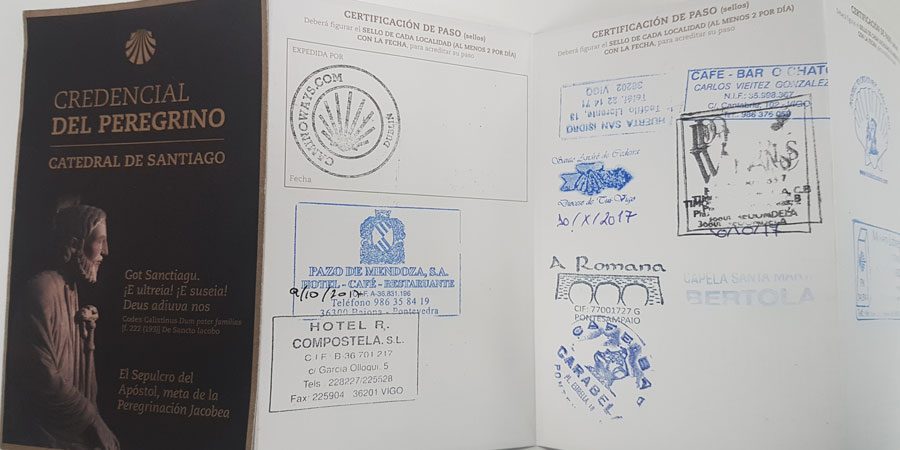
Camino Credentials/ Image from Camino Ways
4. Make it your own
“I walked for all the women in my family who would never have been able to do an experience like this,” said Donna. “My mom had some mental health issues and I thought – I’m going to walk this for you.”
Along the way, Donna met a family of five, with a little girl who had cystic fibrosis and had to be fed through a tube. They ate dinner together, making it one of her most memorable experiences along the way.
For Marilyn, the Camino was a much more physical experience than spiritual. Yet she still connected with locals and other pilgrims along the route. She found that local people love the pilgrims. – it blows my mind the people you meet along the way – it’s just really an amazing experience.”
“We met a young woman along the way form the Netherlands and happened to end up at a café together and started talking. She talked about her difficulty with her mom. And then I had this deep, deep emotional experience – we’re at this café, looking at this beautiful coastline, with tears streaming down our faces. That’s a moment I will always cherish.”
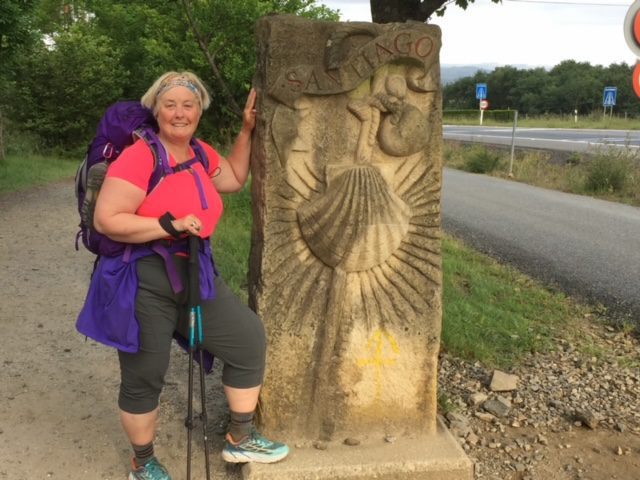
Donna Richardson on the Camino/ Photo provided by Donna Richardson
5. Set your own pace
Debra Payne has been twice, in September 2016 with a friend. She started in France, skipped a few areas but made it.
“I had heard about it many years ago,” she said. “I had just had double knee replacement, so I wasn’t in great shape. I couldn’t do the 25 km at the beginning, I could only do 15 km and I was fine with that. I was literally crawling on the rocks up to Corazon which is a vertical climb. Then, I met a man who said to me: ‘Take 20 steps at a time, then rest.’ Together, we walked up the mountain together, 20 steps at a time.”
She went back again in 2019, starting in Porto for a two-week walk. This time, she was far more prepared and stayed in mixture of hostels and hotels.
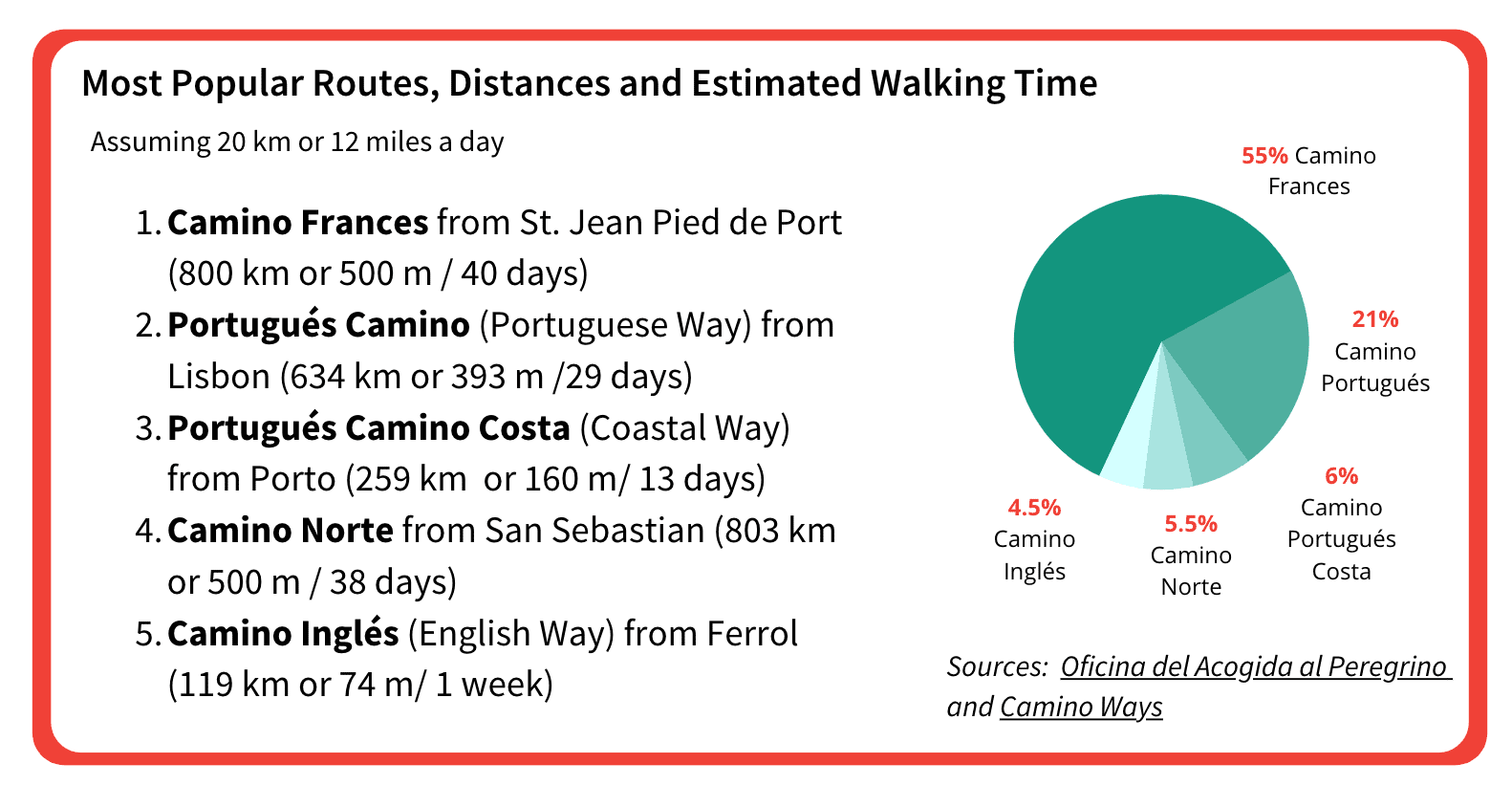
Advice from Women
Marilyn’s tips:
- Your age is an advantage – they tend to put older people in a lower bunk.
- Start early, try to get in 15-20 km a day – get up at 5 or 6 am and start walking.
- Try to be first in line at the hostels.
- We are walking on someone else’s land – remember to honour that.
(Note: Marilyn is now planning to walk the Canadian Camino in PEI in mid-August and is looking for women to meet while there. Please email [email protected] if you’d like to learn more about her trip).
Donna’s tips:
- I never felt unsafe, but as a single woman, be aware
- Keep your moneybelt on for your passport on at all times, even when sleeping
- The last 100 km is the busiest, all the routes funnel into it, so book ahead if you can. In Spain, part of students’ credit is to do volunteer work, so the kids do the last 100 km. It makes it more exciting, adds youthfulness and exuberance to the trip!
- Keep a journal
Loretta’s tips:
- Take out your own garbage. Bring a bag.
Questions and Answers (noting these are pre-COVID)
What should I pack?
- Remember you’re carrying everything on your back
- Poles – if you’re going to use them, try them in advance. They can be helpful to lean on when you need a break on steep hills.
- Forget the makeup
- 3- week packing list: One long t-shirt, one short shirt, pair of pants that converts to shorts, windbreaker, 3-4 pairs of underwear, 2 pairs of socks, small first aid kit
- Shoes – get the best you can and break them in, such as a hiking runner or something very lightweight
- Bring a first aid kit
- Wear good socks to avoid blisters
- Bring TP and handiwipes in case you need to go to the bathroom en route but please take it with you, don’t leave it on the ground!
How can I manage my luggage if I don’t want to carry it?
- Use backpack services like Jacotrans
- Most are $5-7 euros a day
- Drop your bag off at a bar and trust that it will be ready for you miles down the road
- Fill in an envelope, leave money, tie it to your bag
How do I clean my clothes?
- When you arrive at a hostel, do your laundry first, hang it up on the line
Check out our full Camino packing list right here!
What is the best time of year to go?
- Spring and fall are the most popular due to weather; it’s unbearably hot in the summer
- Spanish go in summer
What if I have an emergency along the way? Is it easy to get out?
- Yes, there are trains and buses – generally speaking wonderful transportation system
- There are many health centres; a pharmacist is like a doctor, can dispense medication
- Locals speak very good English, but out of respect learn Spanish words and phrases
How in shape do you have to be?
- Train in advance, practice walking 15-20km a day with your backpack on, with shoes and poles
- When you’re practicing, do different trails not all on pavement
- Make adjustments as you go to weight of your backpack
Where can I stay – do I need to reserve?
- No need to reserve, except perhaps along the last 100 km
- Hostels can’t make a reservation even with COVID
Resources Recommended by Women
- Cathedral de Santiago http://catedraldesantiago.es/en/
- Statistics on the Camino https://oficinadelperegrino.com/en/statistics/
- American Pilgrims on the Camino https://americanpilgrims.org/
- Canadian Company of Pilgrims https://www.santiago.ca/
- Spain Entry requirements: https://reopen.europa.eu/en/from-to/OTC/ESP
- Facebook Forums: “Camigas – A Buddy System for women planning and on route” https://www.facebook.com/groups/CaminoBuddySystemForWomen/
- Routes: https://caminoways.com/camino-de-santiago-routes
- Ivar, a local in Santiago does weekly updates on FB and his YouTube channel, www.caminodesantiagoforum.me
- Village to Village Guide for the Frances: https://www.santiagodecompostela.me/products/2020-village-to-village-guide-camino-frances-st-jean-santiago-finisterre-w-free-credential
- Best apps to plan routes: https://toomanyadapters.com/best-camino-de-santiago-apps/
- My Camino Bed https://www.mycaminobed.com/
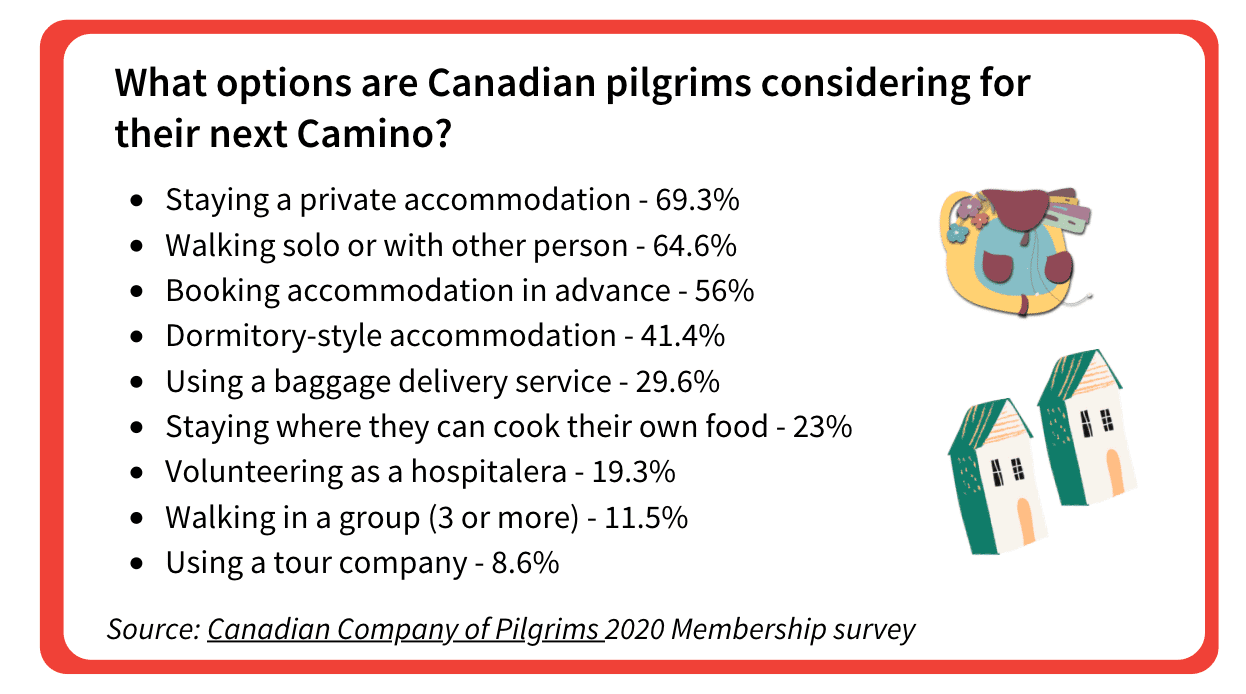
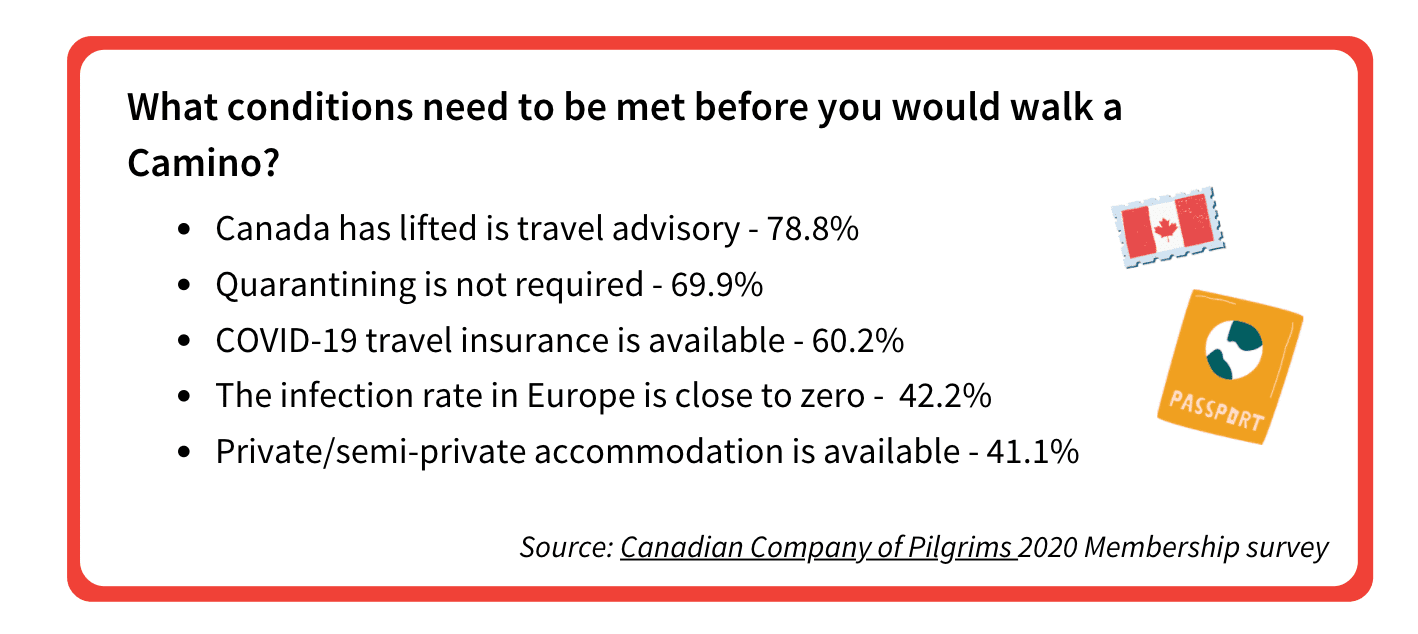
Discover More Along the Camino de Santiago
Confessions of a Wannabe Aurora Chaser: The Myths and Magic of the Northern Lights in Norway
Meet Hurtigruten’s Chief Aurora Chaser, Tom Kerss, who teaches wannabe aurora chasers how to experience the Northern Lights in Norway.
Getting Real About Spain’s Camino with Jane Christmas and “What the Psychic Told The Pilgrim”
Jane Christmas’s funny memoir of her 780-kilometre trek across Spain on the Camino de Santiago to celebrate her 50th birthday and midlife.
Searching for Awe? Don’t Miss Bora Bora
Located in French Polynesia, Bora Bora is a magical ocean paradise well worth the trip, even for women in their 80s.





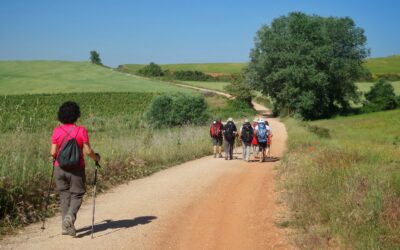
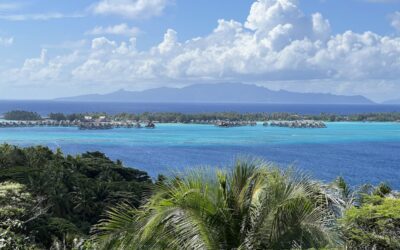
I loved your article. It brought back my own memories of walking the Camino Francis in 2017. Such a memorable experience.
I would like to learn more about the PEI Camino so keep us posted. Diane
Beautifully written! I want to do this walk!!!